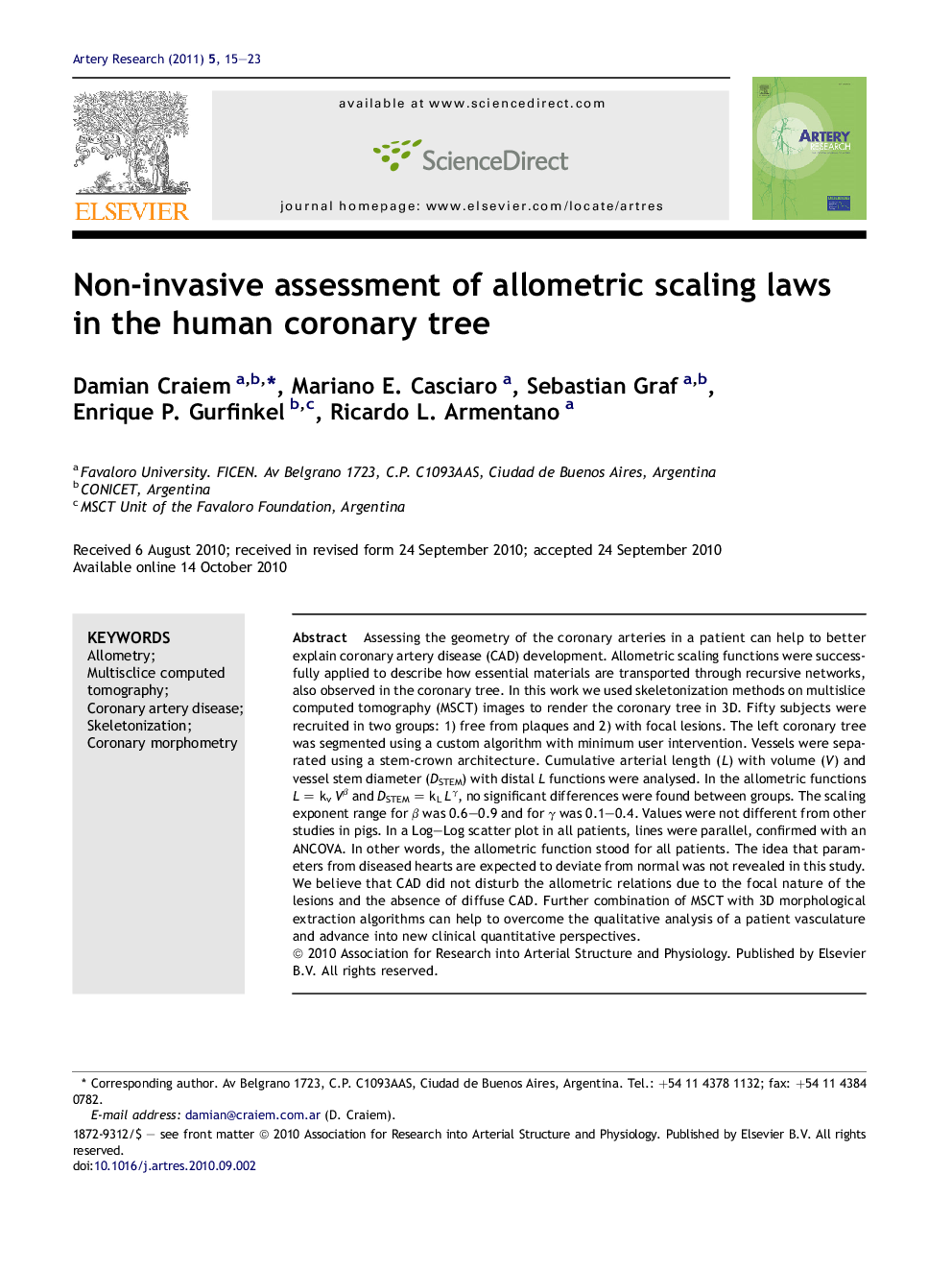| Article ID | Journal | Published Year | Pages | File Type |
|---|---|---|---|---|
| 2891714 | Artery Research | 2011 | 9 Pages |
Assessing the geometry of the coronary arteries in a patient can help to better explain coronary artery disease (CAD) development. Allometric scaling functions were successfully applied to describe how essential materials are transported through recursive networks, also observed in the coronary tree. In this work we used skeletonization methods on multislice computed tomography (MSCT) images to render the coronary tree in 3D. Fifty subjects were recruited in two groups: 1) free from plaques and 2) with focal lesions. The left coronary tree was segmented using a custom algorithm with minimum user intervention. Vessels were separated using a stem-crown architecture. Cumulative arterial length (L) with volume (V) and vessel stem diameter (DSTEM) with distal L functions were analysed. In the allometric functions L = kvVβ and DSTEM = kLLγ, no significant differences were found between groups. The scaling exponent range for β was 0.6–0.9 and for γ was 0.1–0.4. Values were not different from other studies in pigs. In a Log–Log scatter plot in all patients, lines were parallel, confirmed with an ANCOVA. In other words, the allometric function stood for all patients. The idea that parameters from diseased hearts are expected to deviate from normal was not revealed in this study. We believe that CAD did not disturb the allometric relations due to the focal nature of the lesions and the absence of diffuse CAD. Further combination of MSCT with 3D morphological extraction algorithms can help to overcome the qualitative analysis of a patient vasculature and advance into new clinical quantitative perspectives.
